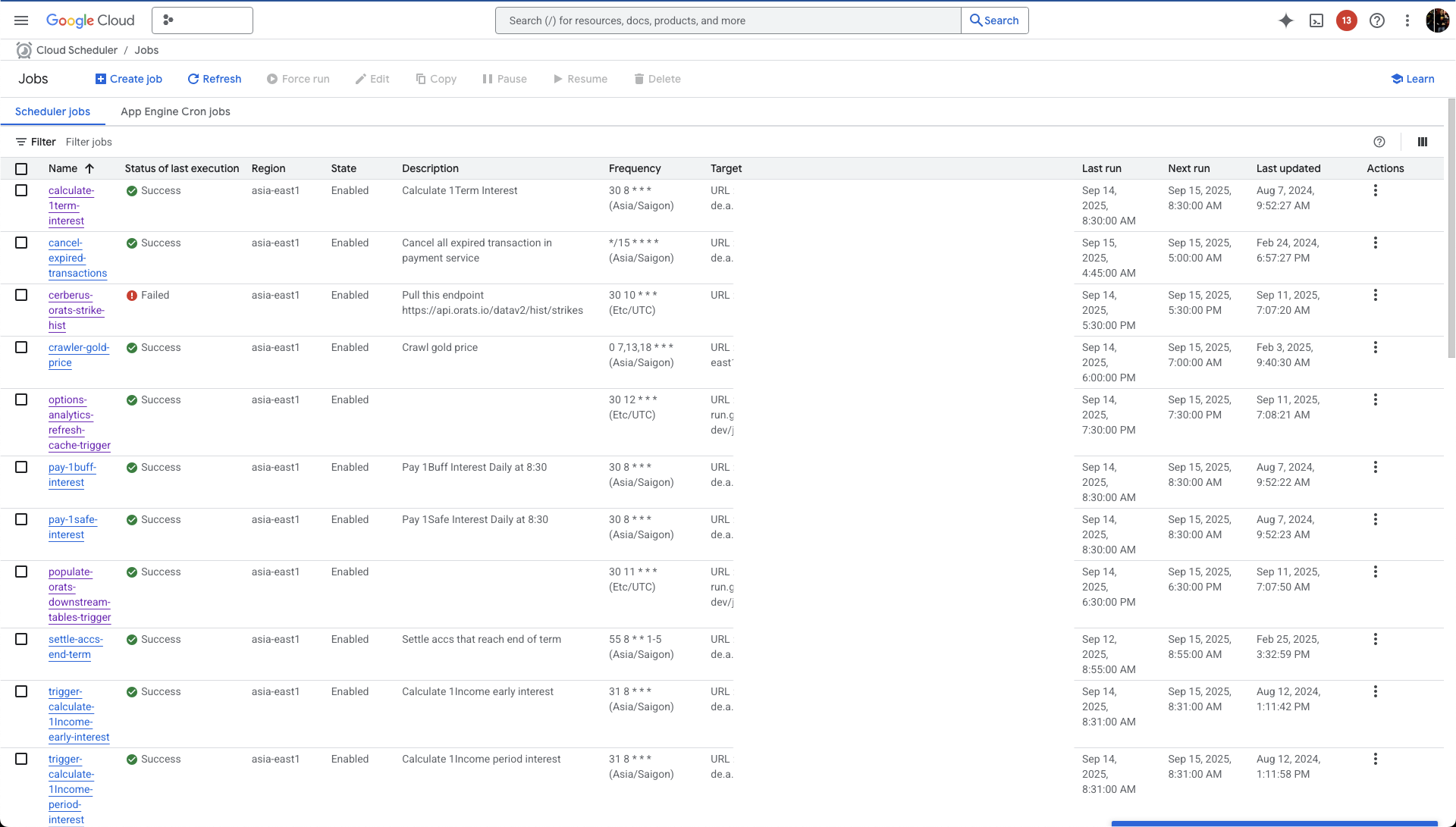- Published on
System Design: Getting Started with Google Cloud Scheduler
- Authors
- Name
- Loi Tran
Introduction
Google Cloud Scheduler is a fully managed cron job service that allows you to automate the execution of tasks at specified times or intervals. It is ideal for triggering HTTP endpoints, publishing messages to Pub/Sub, or running App Engine tasks on a schedule, making it a powerful tool for automating workflows in cloud environments.
Purpose
Cloud Scheduler helps you automate repetitive tasks such as:
- Sending scheduled emails or notifications
- Cleaning up databases or storage buckets
- Triggering data pipelines or ETL jobs
- Syncing data with external APIs
- Running periodic backups
Benefits
- Fully managed: No need to maintain servers or cron daemons.
- Reliable: High availability and retry mechanisms ensure jobs run as scheduled.
- Flexible: Supports HTTP, Pub/Sub, and App Engine targets.
- Secure: Integrates with IAM for fine-grained access control.
- Scalable: Easily handles jobs for projects of any size.
Example: Scheduling a Job with Cloud Scheduler
Suppose you want to trigger a Cloud Run service every day at midnight. Here’s how you can set it up:
Go to Cloud Scheduler in the GCP Console:
Create a new job:
- Click "Create Job".
- Enter a name and description.
- Set the frequency using cron syntax (e.g.,
0 0 * * *for midnight daily). - Choose "HTTP" as the target type.
- Enter the URL of your Cloud Run service.
- Set the HTTP method (usually POST).
- Add any necessary authentication headers.
Save and activate the job.
Alternatively, you can create a job using the gcloud CLI:
gcloud scheduler jobs create http my-job \
--schedule="0 0 * * *" \
--uri="https://your-cloud-run-service-url" \
--http-method=POST \
--oidc-service-account-email=your-service-account@your-project.iam.gserviceaccount.com

Conclusion
Google Cloud Scheduler is a robust solution for automating scheduled tasks in the cloud. Its reliability, flexibility, and ease of use make it a great choice for developers looking to streamline operations and